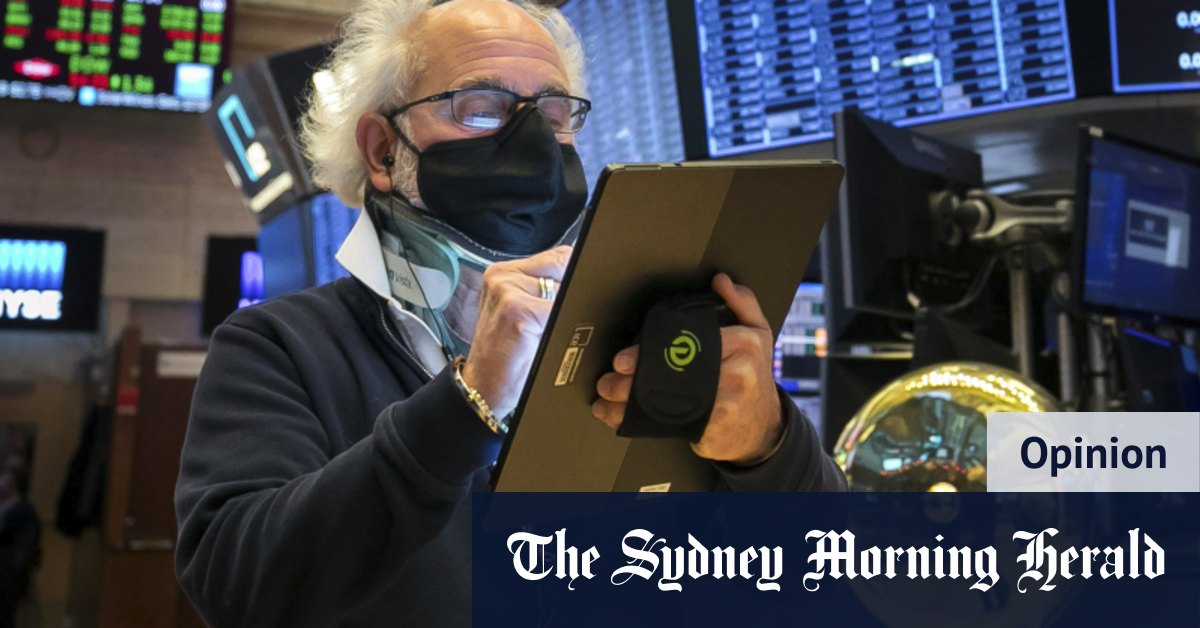
There’s an eerie calm in markets despite disturbing numbers
Indeed, the markets’ reaction – the S&P500 and Nasdaq indices both rose on Friday and 10-year bond yields edged down and remained around their lowest level since early March and, at 1.45 per cent, 30 basis points below their recent peak of 1.74 per cent on 31 March – was to simply ignore the data, which showed a continuation of the accelerating surge in inflation experienced in the past few months.
In April the headline number was 4.2 per cent and the core inflation number was three per cent.
It is true that there were “base effects” in the data – sectors of the economy most affected by the pandemic last year, like travel, entertainment and used cars are rebounding as the economy’s re-opening gathers pace – and there are also supply-chain bottlenecks that are pushing up prices.
If the inflation rate doesn’t start to ebb as this year progresses the prospect of the Fed being forced to act prematurely, and all hell breaking loose in markets, will strengthen.
Labour costs, commodity prices, grocery prices and transport costs are also surging, however, as rising consumer confidence and vast amounts of fiscal stimulus flow through to the data. If the Biden administration can get its spending plans through Congress there’ll be vastly more fiscal stimulus to come.
The Fed remains convinced that these influences are transitory and, as the pandemic months drop out of the comparisons and the supply chain issues are sorted out, inflation will eventually fall back towards its target of two per cent on average.
Loading
Others aren’t as convinced, arguing that the “transition” will be more protracted, and the higher inflation numbers more stubborn, than the Fed envisages.
If they were right, the Fed would move belatedly – and be forced to lift rates more decisively – to deal with an inflation genie that had already escaped the bottle.
That would be destructive for markets, companies and individuals who have factored a “lower for longer” rates outlook into their pricing, borrowing and spending.
The Fed’s new policy of reacting to evidence of an inflation outbreak, rather than – as it used to in the past – trying to act pre-emptively, could force it to take cruder actions that would push the US economy back into recession while blowing up financial markets whose valuations rely on interest rates remaining near-zero indefinitely.
The market response to the latest inflation data might suggest that investors are complacent about the risk of an inflation outbreak but there is another explanation, drawn from past experience of the Fed’s behaviours.
It might be that investors are conscious of the risks of inflation but are convinced that, even if there is a structural, rather than transitory, element to the recent surge the Fed will be behind the curve and stay there for years, partly because it will be fearful of the way markets could respond if it began to tighten monetary policy.
In 2013, and again in late 2018, the Fed was forced to reverse course by the markets’ savage and destabilising responses to its plans to tighten the monetary settings.
Given how stretched share and bond market prices are in this pandemic-shaped environment, a new taper tantrum could have damaging economic effects in the US, as well as unpleasant implications for the global economy and financial system.
The Fed’s statements and its chairman Jerome Powell’s comments at the press conferences he holds after their release will be pored over for any hint that its confidence in the “transitory” inflation scenario is wavering or that is sees the transition lasting long enough to pose the threat of embedding and entrenching expectations of higher inflation.

The US Fed is not concerned with high inflation numbers, sayin they are “transitory”. Credit:Getty Images
There is the annual Jackson Hole gathering of central bankers and other economic policymakers in Wyoming scheduled for August.
That “symposium” has been used by the Fed in the past to provide more detailed insights into its thinking and plans and there is an increasing expectation that Powell will use it to unveil a schedule for a tapering of the Fed’s bond-buying that will start gently next year.
That would be another in a string of delicate moments for the Fed, with inflation and employment data and the Open Market Committee meetings providing a regular series of potential flashpoints.
Loading
As the US economy continues to re-open, already-impressive vaccination rates continue to rise and the full effects of the existing stimulus the Biden administration has injected into the economics have worked their way into the economic data it will be easier to test the Fed’s and the markets’ confidence in the transitory inflation scenario.
If the inflation rate doesn’t start to ebb as this year progresses the prospect of the Fed being forced to act prematurely, and all hell breaking loose in markets, will strengthen.
The Market Recap newsletter is a wrap of the day’s trading. Get it each weekday afternoon.
Stay connected with us on social media platform for instant update click here to join our Twitter, & Facebook
We are now on Telegram. Click here to join our channel (@TechiUpdate) and stay updated with the latest Technology headlines.
For all the latest Education News Click Here
For the latest news and updates, follow us on Google News.

